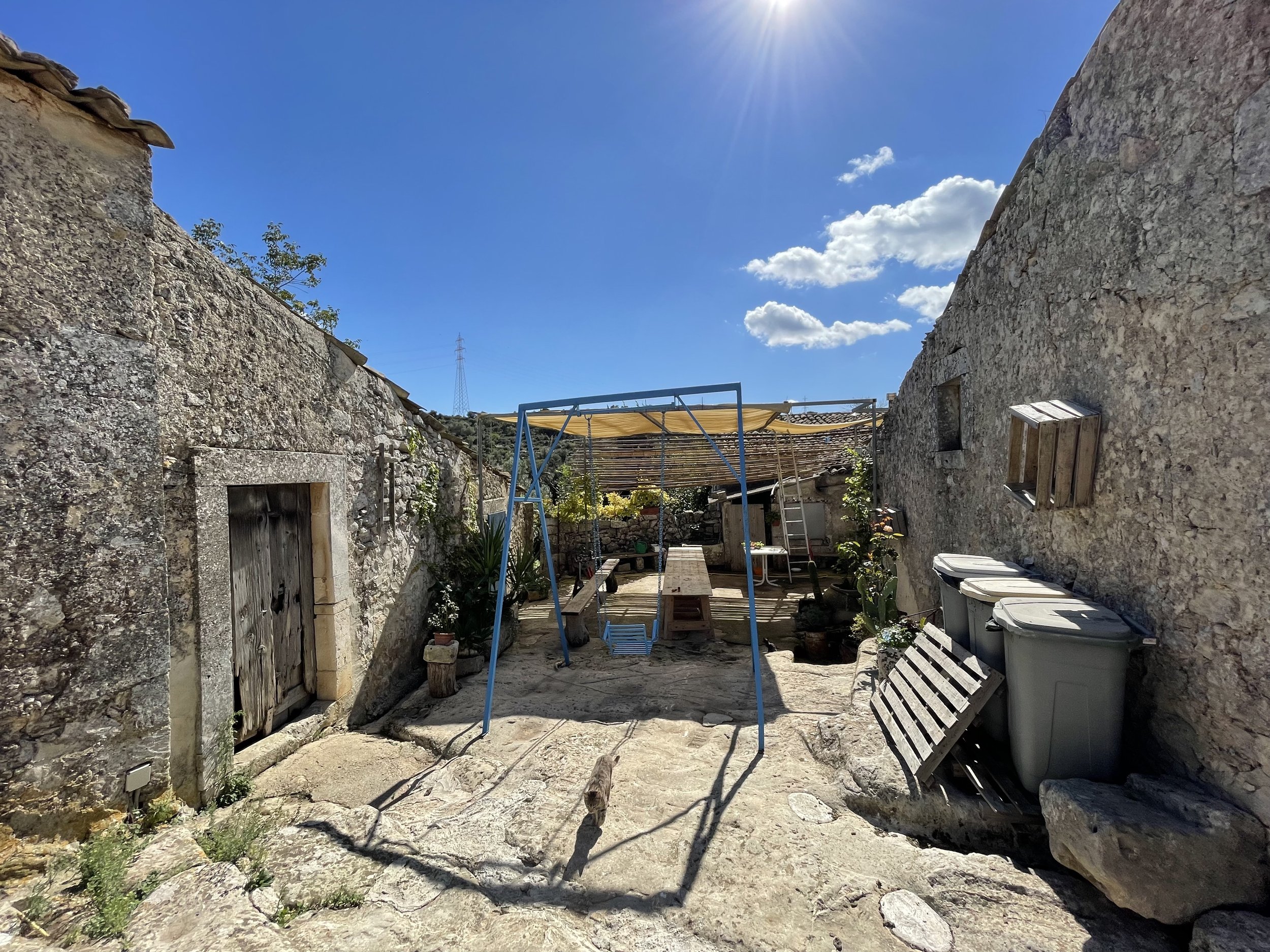Baking Bread in Sicily
This past September, after our Sicily Yoga Trip, I headed north through the Sicilian countryside to Palazzolo Acreide where I met Cetty. I hopped in Cetty's Fiat Punto and we drove to her family's country home to begin my bread making experience.
We pulled off the main road and Cetty stopped to open a gate to the property's driveway. The little Fiat took us on the 15 minute journey up a steep, primitive road towards the place Cetty's family had called home for centuries. We reached a cluster of stone buildings sitting among the golden fields where we were greeted by Cetty's brother Enzo, his wife Beatrice and a few dozen cats and dogs.
The collection of stone buildings, built at various times throughout the last century or so contained the family home, various barns and agricultural buildings and of course the ancient stone oven.
We started our day in a room adjoining that with the oven. Displayed around the room were family heirlooms, farm and kitchen tools and relics of bygone eras. Cetty explained that many of the implements seen around room, like the maidda(a wooden trough used for mixing and kneading the dough), were used by her mother and grandmother for breadmaking before they were afforded the assistance of the large commercial electric mixer we would be using.
Enzo brought out a large bowl that contained the crisciente – literally the “grower” and something similar to sourdough starter. We mixed the crisciente with 20 kilos of semolina flour from a local mill and some water. It was a very large batch of dough and typical of how the family has typically baked over the years. Bread was made once a week with some of the loaves reserved for the family’s use and others sold or traded to neighbors and others who didn’t have their own oven.
After a period of kneading in the large, commercial mixer we began shaping the loaves into panette – little loaves. Each loaf was deeply scored down the center then placed to rest on a layer of blankets warmed with heating pads. While working with the dough I realized that it was a much stiffer and drier dough than I was used to from my sourdough starter at home. The bread we were making was ‘pasta dura’ and, once bake would be dense and low on moisture – much different from the airy, bubbly, moist, chewy sourdough I was used to making at home.
With a portion of the dough, we rolled out large, thin rectangles that were spread with sauce and topped with cheese before being folded into pocket-like forms called ‘sciacce’.
As the panette rose in their warm bed, we used some of the remaining crisciente, this time mixed with significantly more water and a ‘00’ flour to make a pizza dough. We eventually stretched the bubbly dough out over antique steel pans and created some delicious pizzas.
It was now time to start the fire and we moved to the next room where Enzo was breaking up olive wood twigs and branches he had collected from the farm and piling them up with dried olive tree leaves in the centuries old stone oven that had been constructed by his family many generations ago.
A fire was built, the coals were spread out and then the hot embers were removed from oven by Beatrice and transferred to a steel can. The oven was now at temperature and ready for baking. We slid in the pizzas, sciacce and loaves of bread. As everything baked, we toured around the home and outbuildings, learning of the land’s history and its evolution over the centuries.
The pizza and sciacce were done first and we sat down to feast on those while the bread continued to bake.
We ate sciacce, drank wine and talked….and almost forgot about the bread! Thankfully we remembered in time and took the loaves out from the oven then tore into a loaf and ate chunks of bread dunked in olive oil seasoned with salt, oregano and chile flake.
This was truly an amazing, once-in-a-lifetime experience that I am excited to share with our group this fall!












